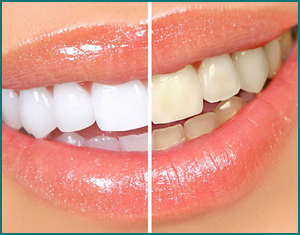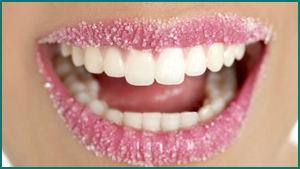
Esthetic dentistry is a field of odontology that solves problems related to oral healthcare and the harmony of the mouth in its entirety.
Esthetic dentistry, exercised in a responsible way, seeks to improve people’s smiles, starting from an individual analysis of the face and mouth, to achieve a coherent whole, on a natural and healthy structure.
The appearance of the teeth can be improved with different types of aesthetic and rehabilitation treatments, depending on the characteristics and needs of each patient.
Whitening
Tooth whitening is an esthetic treatment that seeks to adjust the tone of the dental piece’s original color, leaving the teeth whiter and shinier.
Tooth whitening allows to eliminate the stains produced by extrinsic agents like tea, coffee, red wine, and other substances or food. However, not every single stain or darkened teeth can be eliminated through tooth whitening and may require other kinds of esthetic dentistry treatment, like the use of porcelain veneers or crowns.
Generally, though it depends on the state of the denture of each patient, it is important and necessary to carry out a complete professional dental cleaning (ultrasounds plus professional brushing), prior to the completion of the dental cleaning.
The whitening does not have any effect on any kind of restaurations (amalgams, restaurations made with halogen light, resins, or white fillings, incrustations and crowns or bridges). In the case that the patient presents this type of arrangement, specially in the previous sector, the whitening is carried out and then the restaurations that have not modified its color are rechanged. In order to carry out the rechange of these restaurations, it’s necessary to wait approximately 15 days for the color obtained through the whitening to stabilize.
Direct restaurations
When a tooth has lost a little substance, whether because of caries, fractures, etc., it must be restored. While different techniques and materials exist, nowadays esthetic materials predominate and the most well-known is the composite. These materials allow the restoration of the shape and function of the tooth in one single visit.
Porcelain Veneers
They are an excellent alternative to achieve an aesthetic change in the smile. Unlike crowns, these only cover the visible part of the teeth, and can be as thin as a contact lens.
In what cases is recommended the use of porcelain veneers?
-If the shape of the tooth is not the right one because it was fractured or its anatomy is abnormal.
-In important color changes.
-When correcting minor dental malpositions.
-When closing unwanted spaces between teeth.
What are the advantages of the veneers regarding other techniques?
-They usually are translucent like tooth enamel; because of this they have luministic characteristics very similar to the ones of a natural tooth.
-They are less susceptible to color or volumetric changes.
-They keep the superficial brightness with time.
In what cases is it not recommended to use porcelain veneers?
-If the patient’s oral hygiene is not correct.
-If the amount of dental tissue remaining is not strong enough to hold a porcelain veneer.
-In patients with bruxism.
-If the patient needs to correct major malpositions.
Dr. Manuel Amarilla
Reg. Prof. Nº: 4121
Specialist in Aesthetic Dentistry
